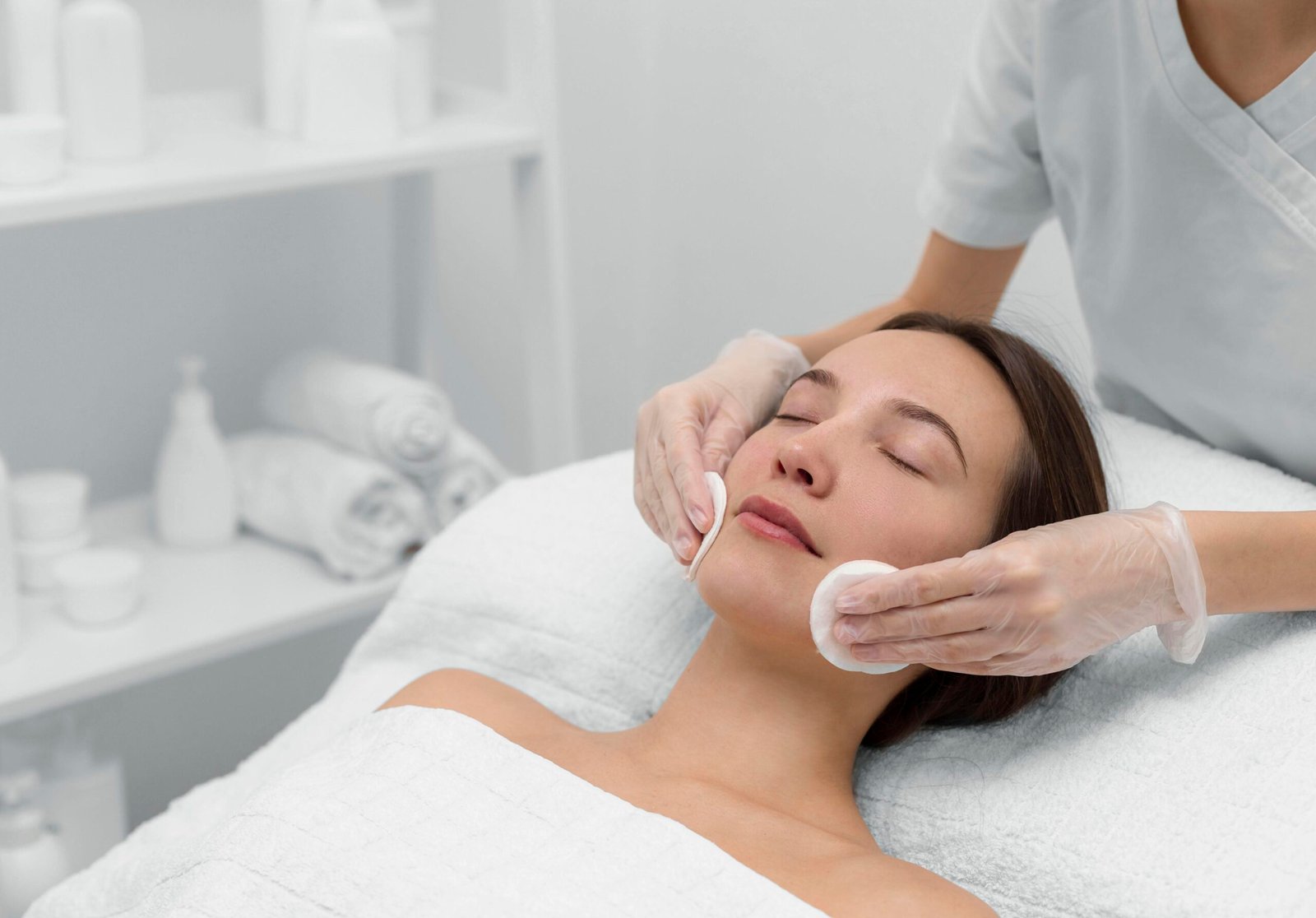Considering a chemical peel but not sure where to start? You’re not alone — with so many types and levels available, it can feel overwhelming. But the truth is, chemical peels can be one of the most effective treatments for smoother, brighter, and more youthful skin.
In this article, we’ll break down what chemical peels are, how they work, the different types available, and how to choose the right one for your skin type and goals.
What Is a Chemical Peel?
A chemical peel is a skincare treatment in which a chemical solution is applied to the skin, causing the top layers to exfoliate and eventually peel off. The new skin underneath is typically smoother, more even in tone, and has fewer imperfections.
Peels are used to treat:
- Fine lines and wrinkles
- Hyperpigmentation and dark spots
- Acne scars
- Sun damage
- Dull or rough skin texture
The procedure is typically performed by a dermatologist, pharmacist, or biomedical professional in a clinic setting.
How Do Chemical Peels Work?
The process involves applying a specially formulated solution to the face (and occasionally other areas), which removes damaged skin layers. As the skin heals, it reveals fresher, healthier tissue underneath.
Some chemical peels offer dramatic effects, while others are gentler and more gradual, depending on the strength and type of peel used.
The Three Main Types of Chemical Peels
Chemical peels are generally classified into three categories based on their strength and depth of action:
1. Alpha-Hydroxy Acids (AHAs) – The Mild Peel
- Derived from natural sources (e.g., glycolic acid from sugar cane, lactic acid from milk)
- Ideal for gentle exfoliation and brightening
- Often used in daily or weekly skincare
- Great for mild pigmentation, rough texture, or dullness
- Minimal to no downtime
You’ll often find AHA in facial cleansers, creams, and toners. Dermatologists may recommend these for regular skin maintenance.
2. Trichloroacetic Acid (TCA) – The Medium Peel
- Deeper than AHA peels
- Ideal for fine lines, sun damage, and moderate pigmentation
- Requires some healing time (usually 1–2 weeks)
- May be done as a one-time treatment or in a series
TCA strikes a balance between power and recovery — a popular choice for those seeking noticeable results without the downtime of a deep peel.
3. Phenol – The Deep Peel
- The strongest type of chemical peel
- Used for deep wrinkles, severe sun damage, and coarse skin texture
- Requires significant downtime and post-procedure care
- Can cause skin lightening — not ideal for darker skin tones
- Not recommended for other body areas due to risk of scarring
Because of its strength, phenol peels are usually a one-time treatment and must be performed by highly qualified professionals.
What to Expect During the Procedure
- Mild peels (AHA) may feel like a slight tingling
- Medium to deep peels (TCA, Phenol) can cause burning or stinging sensations
- Redness, flaking, and irritation are normal side effects
- Healing times vary from a few hours to several weeks
Always follow your provider’s post-peel care instructions, which may include avoiding sun exposure for several months and using gentle, hydrating products during healing.
Is It Safe for Everyone?
Chemical peels are generally safe, but not suitable for every skin type or condition.
You may not be a good candidate if:
- You have very sensitive skin or active skin infections
- You’re prone to keloids or hypertrophic scars
- You’ve recently had other skin procedures like laser or chemical exfoliation
- You have very dark skin and are considering a deep peel (risk of discoloration)
That’s why a professional evaluation is essential before choosing your peel.
Customizing the Right Peel for You
A certified dermatologist, pharmacist, or biomedical professional will assess your skin’s condition and help you:
- Understand which peel is right for your goals and skin tone
- Choose the correct active ingredient and concentration
- Set realistic expectations for results and recovery
Some providers may even offer a custom blend for your skin.
Things to Clarify Before You Start
Before agreeing to any chemical peel, make sure you:
- Understand the depth and intensity of the peel
- Ask about healing time and post-procedure care
- Know exactly what to expect in terms of results
- Feel comfortable with the qualifications of your provider
When applied properly, chemical peels can dramatically improve your skin’s tone, texture, and clarity.
Final Thoughts: Peels Are Powerful — When Done Right
While chemical peels are often misunderstood as a “miracle cure,” the truth is: no single peel is right for everyone. But with the right guidance, chemical peels can become one of your most effective allies for long-term skin health and radiance.
Always start with a skin consultation, be informed about your options, and follow the advice of trained professionals. Your skin deserves expert care — and with the right peel, a fresher, clearer you is just beneath the surface.
